The Challenges of Dystonia: a Snapshot Across Europe
12 April 2018, D-Days lunch in European Parliament Salon
For our 25th Anniversary event we were welcomed into the European Parliament, Brussels by Finnish Member of the European Parliament (MEP) Merja Kyllönen.
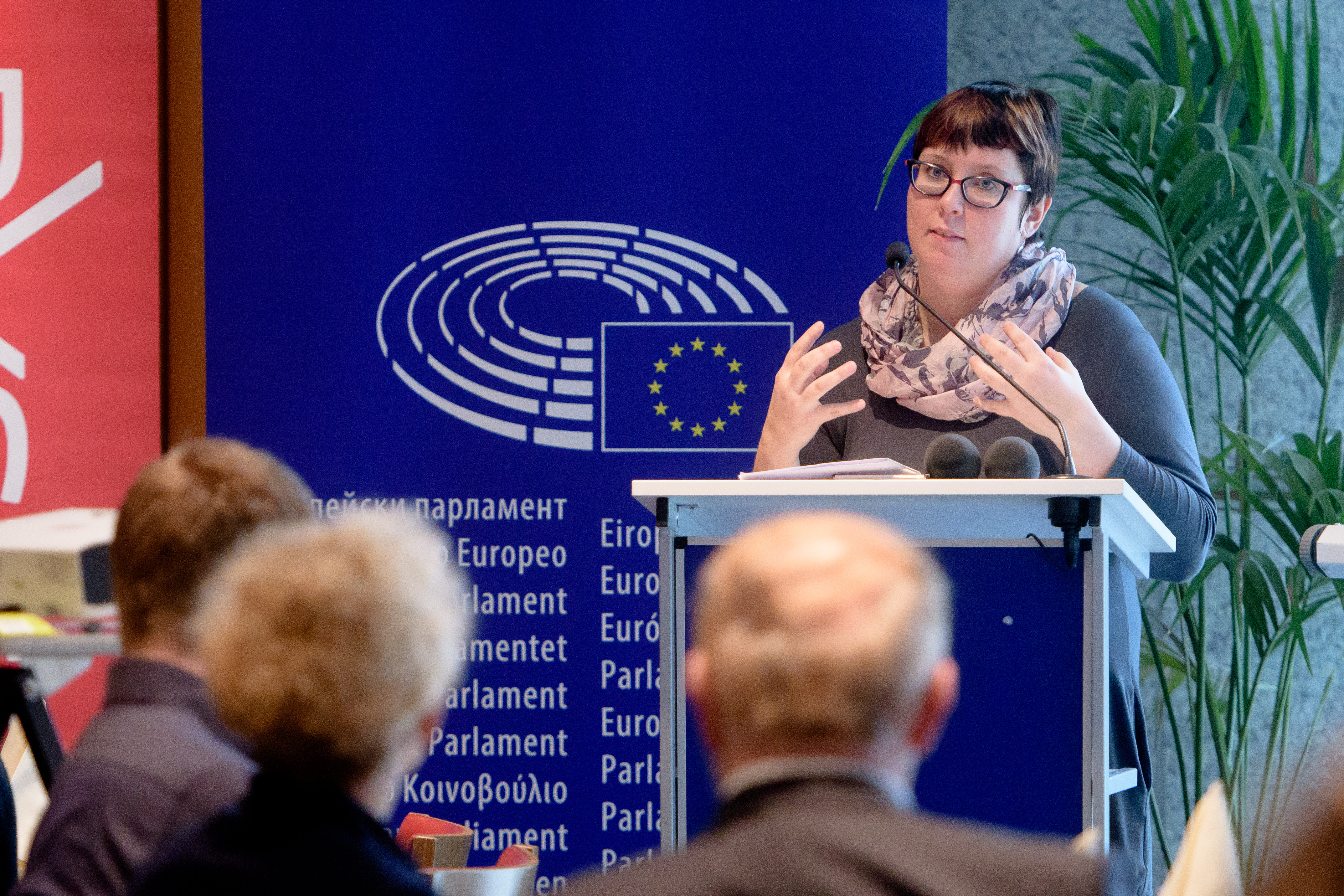
Foto: stephan-roehl.de
She explained how she had become involved with Dystonia Europe when she agreed to do a Jump for Dystonia, she just hadn’t realized it would be out of an aircraft! She described it as the most fun you can have with your clothes on!
She also said it helped her to understand how we are all prisoners of our bodies and dystonia patients more than most. ‘We need to look at the health gains and socioeconomic impacts resulting from best health interventions in comparison with current care, and compare this with no treatment at all’ she said. ‘We need to map care pathways for the disorder along the whole care process in order to identify the major unmet needs and causes for treatment gaps.’
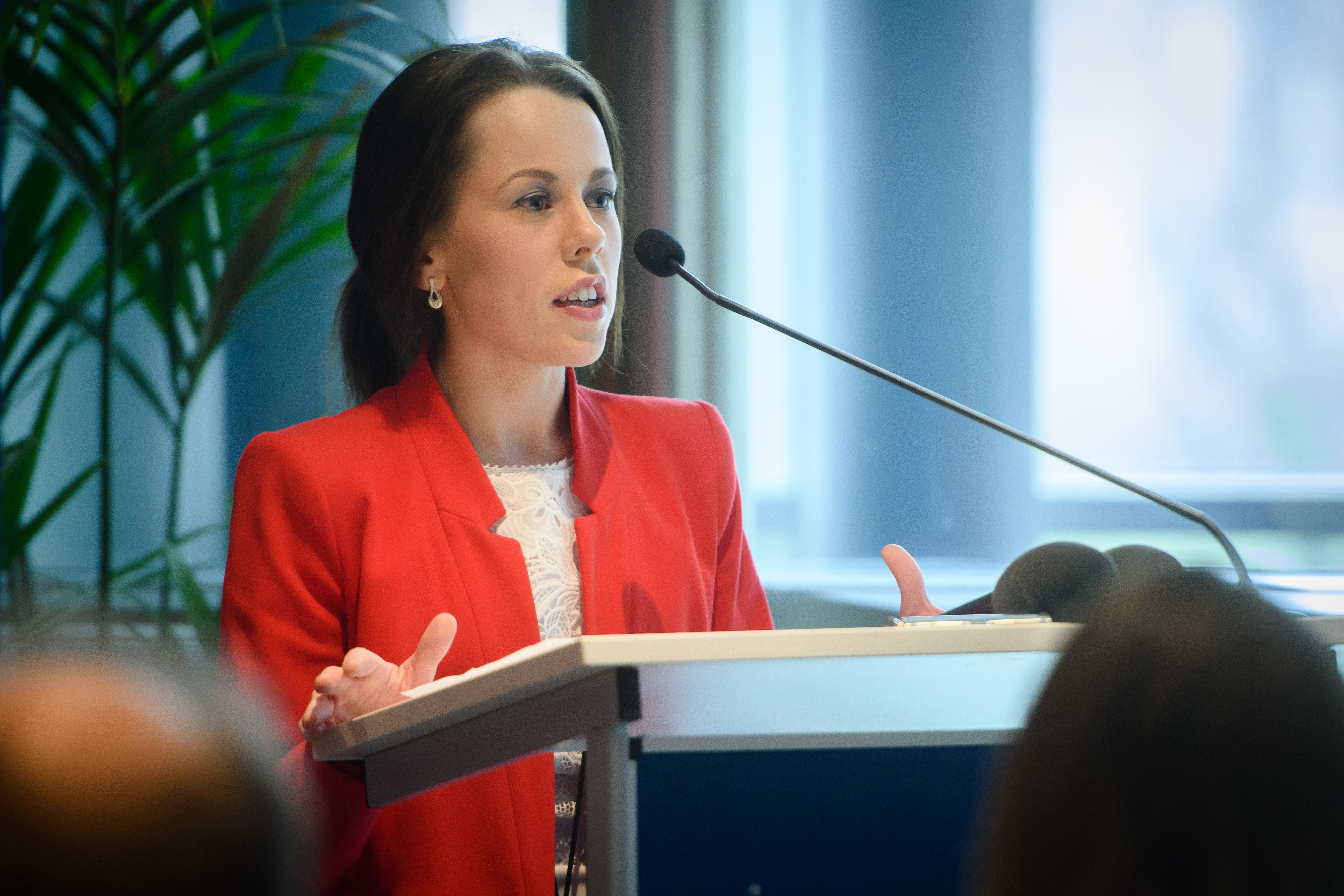
Foto: stephan-roehl.de
Donna Walsh, from the European Federation of Neurological Associations, then thanked MEP Kyllönen for the warm welcome. Donna explained EFNA is an umbrella of pan-European patient groups including Dystonia Europe, working at EU level to include a socioeconomic angle in their policy messages to match the priorities of the European Union in terms of economic growth and social progress.
‘The economics are something that we have been working on for a long time in the area of neurology. The European Brain Council conducted a Cost of Brain Disorders Study in 2006, repeated in 2010 – showing the cost of brain disorders to the European economy is 800 billion euro per year. More costly than cancer, cardiovascular disease, and diabetes combined. A figure that is growing. A figure that includes 40% indirect costs – e.g. not being able to work, the need for informal care, etc. And this makes it a scary figure, because how do we tackle such a large and complex challenge?
‘So last year the EBC and its partners tried to simplify the challenge by proposing real solutions. Doing exactly what you mentioned MEP Kyllönen, instead of looking at cost, we looked at value – the value of treatment. We mapped the patient journey and costed the desired/best practice approach to care versus current care, or no care – illustrating the cost savings that can be made if things are done right.’
Adam Kalinowski, a 34-year-old Pole living in Ireland then gave the patient’s view.
Adam has cervical Dystonia and detailed his difficulties in day to day life – going to the barber or dentist, even crossing the street. He was initially referred to a psychiatrist, he was fortunate that he was quickly referred on to a neurologist who after an MRI scan quickly diagnosed dystonia.
He is aware that not all have such a quick diagnosis ‘Someone I know waited thirty years’ he said. His treatment was the standard botulinum toxin but over the years this became ineffective. He lived with ‘horrible pain’ couldn’t drive or leave his home for years. Then a different botulinum toxin was made available. ‘My body posture was still not normal but what really mattered to me was two things: no pain and the ability to look straight ahead without holding my head with my hands. But for my employer, it was not enough.
I told them that there was no cure for my disease, but they only wanted from me the date when I would be healthy and capable of returning to work. Finally, I was dismissed on disciplinary grounds. It was a job in a supermarket. My employer employs a few hundred people in very different roles, but they never offered me a different job to suit me. The company’s approach was: either you are 100% healthy or you cannot work.
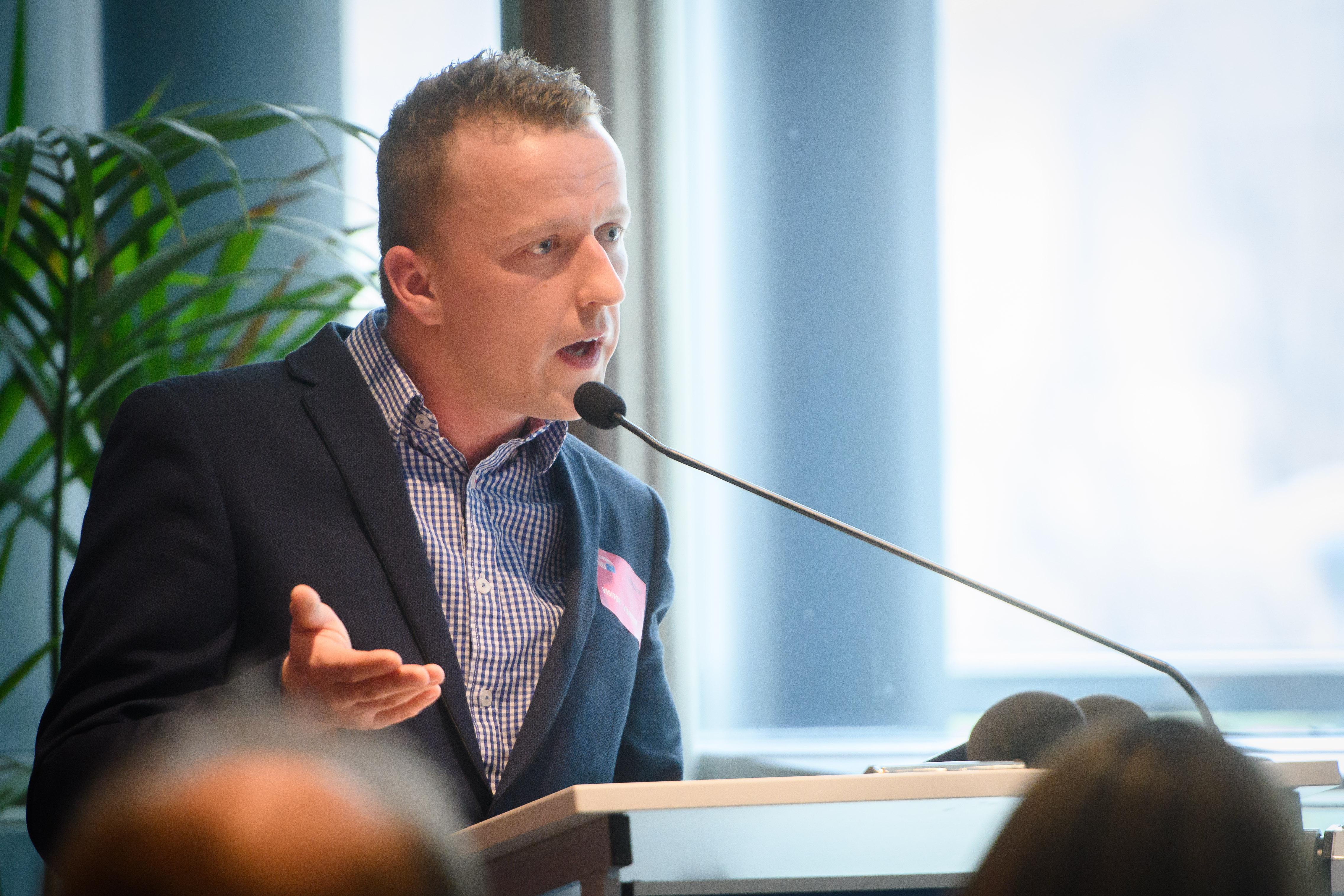
Foto: stephan-roehl.de
‘So, I lost my source of income and had to apply for social assistance. I got an illness benefit but it ended after some time. The Irish welfare system is based on a similar view as that of my employer: you are either healthy or disabled. Nothing in between.’
Professor Maja Relja, from the University of Zagreb, told the audience ‘Dystonia is an odd movement disorder, however, not every odd movement is dystonia!’ She then presented the first results of the survey to assess challenges patients face in accessing correct diagnosis and treatments and measuring satisfaction with the treatments.
She said most people who responded to the survey were in their most productive years 21-60 years old. In answer to the question: what was your experience when you first visited your General Practitioner (GP) with symptoms? 23% said the GP did not recognize my symptoms and did not refer me to a specialist. 21% said the GP misunderstood my symptoms and referred me to an incorrect specialist. The correct diagnosis for 12% of people took over 10 years.
Most people received extra information about dystonia via a dystonia patient organization.
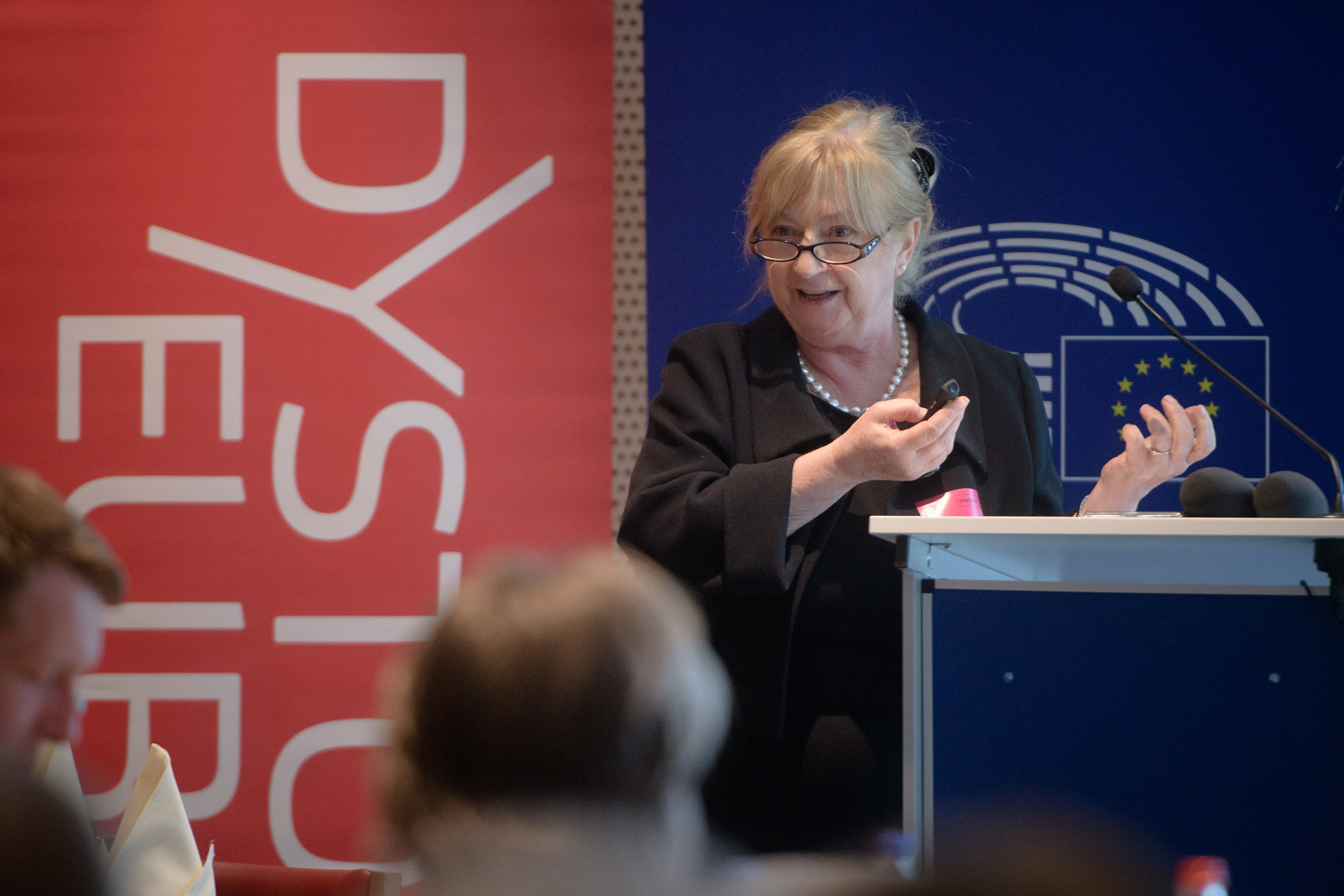
Foto: stephan-roehl.de
Professor Maja Relja then gave Prof. Guenther Deuschl’s presentation, in his absence for family reasons. Points to note on the importance of prompt diagnosis and treatment are:
• Diagnosis is not easy, treatments are limited, and not always effective so many patients suffer from a remaining disability.
• Many countries do not refund botulinum toxin or Deep Brain Stimulation (DBS)
• Expert long-term care is rare yet with a correct diagnosis, treatment, and care, a near-normal life can be achieved.
• Studies are needed to understand the current situation of the patients in Europe and guidance to cost-efficient structures for care
• and more research is needed.
Prof. Rose Goodchild, University of Leuven, explained that in the fifteen years she has worked in the dystonia field there have been no new therapies over this period. ‘The largest funder in Europe is a private research foundation. Dystonia research lacks stimulation of fresh ideas and clinical trials, and the field has plateaued. We don’t know enough even to look for new drugs’ she said.
‘What stands out is the limited amount of research into the molecular and cellular mechanisms. In fact, only 5% of dystonia research examines the pathways. Huntington’s and Alzheimer’s have novel therapies based on mechanistic understanding in clinical trials and that is what dystonia lacks.’
‘Dystonia is locked out of funding as it is neither a neurodegenerative disease or a mental illness’ she called for more flexibility of EU funding. ‘the European Research Council is a good model of bottom up, investigator-led research funding’ Goodchild said.
Nicola Bedlington, Director European Patients Forum (EPF) spoke on Access to Healthcare. ‘Patients across the EU are reporting multiple barriers to access healthcare, sometimes it is not available, or not adapted to needs, or not affordable. EU Member States need to achieve universal health coverage and improve access to healthcare by 2030 according to the UN Sustainable Development Goals’(SDG).
This year a patient led campaign on access to healthcare will be based on the previous work EPF has done. It will support the 2030 Agenda focusing on the SDG 3 on health, build on the outcomes of 2017 campaign and will link to other EPF work, e.g. on nondiscrimination, quality of care and access to medicines. ‘In our future multi annual programme, EPF have committed to delivering information tools of the UN SDG on health and we will organise a UHC Conference in 2020’ Bedlington said.
Brando Benifei MEP from Italy who sits on the Committee on Employment and Social Affairs then took the podium. He commended the dystonia survey which should help inform policy. He said MEPs were looking at post 2020 funding. ‘We have to look at more money for research to find new treatments for a better quality of life. ‘ But he said ‘research alone is not enough, social support is also needed.’
Nessa Childers MEP, from Ireland who is Chair of the Access to Medicines interest group then spoke. She said that for rarer diseases, such as dystonia, research collaboration across the EU was a way forward. She said Brexit put both collaborative research and treatment at risk. She said in the event of a hard border Irish patients would no longer be able to access deep brain stimulation in UK facilities.
Adina Vălean MEP from Romania, sits on the European Parliament Environment and Health Committee. She spoke of the importance of keeping funding for the EU Health Programme. She said it is a vital enabler for health policy formulation and for effective implementation. She also said that the challenges for neurology research can be solved by collaboration at EU level.
MEP Marian Harkin from Ireland who is a member of the Committee on Employment and Social Affairs agreed saying there is a real threat to the EU Health Programme as health is not a priority for the Commission. Although it is definitely a priority for European citizens and this should be noted by the EU President.
Dr. Jean-Pierre Lin, consultant pediatric neurologist in the general neurology and complex motor disorders service at Evelina London Children’s Hospital then spoke. He said dystonia in childhood is often severely disabling, unremitting and unrecognized. Its link with cerebral palsy (CP) is misrepresented and this means dystonia is not such a rare disorder. Commenting on Prof. Goodchild’s presentation he said if dystonia was locked out of general calls for research funding childhood dystonia was doubly so.
Prof. Marjan Jahanshahi said that in her 35 years as a professional little had changed for the patient experience. Dystonia is often still misdiagnosed or takes too long to diagnose. We have had botulinum toxin now for 35 years and DBS for 25 years, but new treatments are still needed. Her question to Nicola Bedlington was we have seen some improvements in medicine but how can we improve the patient journey?
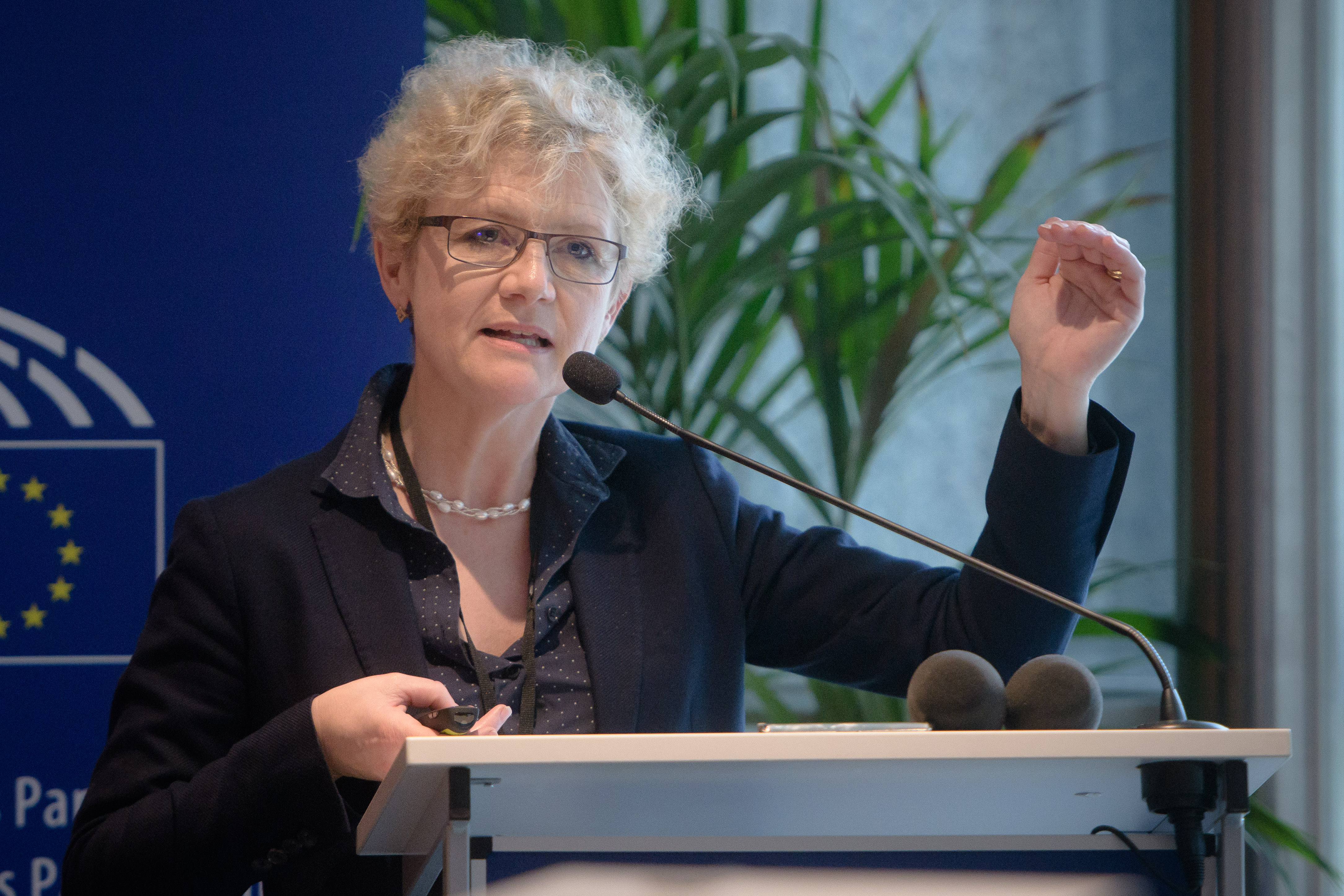
Foto: stephan-roehl.de
Nicola Bedlington replied ‘We need meaningful patient involvement with healthcare professionals and real involvement of patients in research. We need to keep health on the agenda at the member state level. Dystonia patients go back to your governments and engage with them.’
Donna Walsh said ‘It is important to raise awareness with employers, healthcare professionals, and policymakers. We need epidemiological surveys and above all a holistic approach.’
President Dystonia Europe, Merete Avery then thanked everyone, especially the MEPs. ‘It is my hope, being a dystonia patient myself, that all the people affected by dystonia now, and in the future will not have to wait too long before they get the correct diagnosis, will receive treatment and support and therefore can lead a fulfilling life – working, studying, travelling and taking part in society!’
Written by:
Heather Clarke,
EU Consultant
